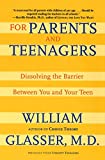Book Recommendations

The Art of Happiness by H.H. Dalai Lama & Howard Cutler, M.D.
I had two people, within a three week time span and completely independently of one another, tell me that this is one of the best books that they had ever read. When something like that happens, you listen. I must say that this book lived up to my extremely high expectations, and I will count it as one of the most influential books that I have ever read. What can be better than tapping into the Dalai Lama’s profound wisdom on how to live a happy life? Well, what was even better was that Dr. Howard Cutler, a psychiatrist, worked collaboratively with the Dalai Lama on the creation of this book. He interviewed the Dalai Lama on numerous occasions and asked him the “big” questions about how to handle anxiety, grief, self-hatred, find fulfillment, etc. He would then take the wisdom of the Dalai Lama’s answers and support it with research findings from psychology as well as from his own experience and psychiatry practice. One aspect that I particularly liked is the Dalai Lama’s contention that the cultivation of positive qualities such as compassion and patience can directly counteract negative qualities such as hatred, egotism, and anxiety. It is amazing how well critical aspects of Buddhism, positive psychology, mindfulness, and cognitive behavioral therapy (CBT) overlap. One thing that it shows me that different disciplines such as psychology, religion, and philosophy often point to the same “truths” about how find happiness in this lifetime. When many different paths lead to the same destination, I believe that it’s time to make a journey to that destination. I have directly endorsed this book to many friends, colleagues, and clients. Buy it, read it, reflect upon it, and then begin implementing some of it in your own life.

The Essence of Happiness by H.H. Dalai Lama and Howard C. Cutler
The Essence of Happiness is a distilled version of The Art of Happiness. So, it contains all of the deep and powerful wisdom contained in the former, but it is summarized and better organized. In The Art of Happiness, Cutler describes the process by which he asks the Dalai Lama questions concerning life’s profound struggles (e.g., how to deal with suffering and loss) and how Western psychology as well as his personal and clinical experiences support the perspectives espoused by the Dalai Lama. As the name implies, The Essence of Happiness focuses on the core of the wisdom rather than how the wisdom was gathered. So, I (Dr. Mike Brooks) would recommend that you read The Art of Happiness first and then read The Essence of Happiness as a refresher. Western psychology continues to play catch up with what Buddhist “psychologists” have known for thousands of years. Importantly, one doesn’t have to be a Buddhist to benefit from the truth contained in either of these books. They are not teaching one how to be a Buddhist nor do they focus on the religious aspects of Buddhism. In fact, many great philosophers (e.g,. Epictetus, Marcus Aurelius) and religious/spiritual teachers (e.g, Jesus, Gandhi, J. Krishnamurti, Lao Tzu, Eckhart Tolle) have taught some of the same principles but from slightly different angles. There is so much life-enhancing information in both of these Happiness books that I’d recommend focusing on one or two teachings at a time and turning them into a “practice.” Once you have incorporated some of these principles into your life, you are, as the title suggests, likely to be a happier person.

Do One Thing Different by Bill O’Hanlon
I attended a workshop of Mr. O’Hanlon’s many years ago, and I was quite impressed with his philosophy of how change occurs and of the many easy and accessible techniques he offers on how to make that change happen. He is a psychotherapist, an author of around 30 books, and a dynamic speaker and teacher. He developed “possibility therapy” which is his version of a brief solution-oriented therapy combined with positive psychology. Consistent with this approach, in Do One Thing Different, Mr. O’Hanlon posits that we are dynamic individuals in a world full of possibilities. He does not believe in “pathologizing” individuals because, if we come to believe this story, it limits our possibility to transform and overcome. If we are feeling stuck in our relationships, at work, or in life, breaking out of old patterns might be easier than we think. Even small adjustments in our thinking or behavior (i.e., “change the viewing or change the doing”) can ultimately help us break out of these old patterns and help us to head in the direction that we’d like to go. In an easy-to-read format, Mr. O’Hanlon provides numerous strategies and suggestions that we can implement to open up new pathways in life.

The Geography of Bliss: One Grump’s Search for the Happiest Places in the World by Eric Weiner
Eric Weiner’s The Geography of Bliss: One Grump’s Search for the Happiest Places in the World is an absolute treat. Weiner is a journalist and a veteran foreign correspondent for National Public Radio and a self-professed curmudgeon. As the book implies, Weiner chronicles his quest to discover why people in some countries (e.g., Iceland, Switzerland, Thailand) are much happier than in others (e.g., Moldova, Qatar). Weiner deftly describes his insights during his travels in a hilariously witty fashion. Weiner narrates the audiobook, so he his sense of humor comes across effortlessly. I (Dr. Mike Brooks) laughed aloud many times while listening to this audiobook, and that was usually when I was by myself while running or driving. Laughing by myself is not something I or most people are prone to do, so the book is that good.
Weiner also weaves research findings from the fields of positive psychology and sociology into The Geography of Bliss. So, the book is educational but he integrates this information so well that Weiner never comes across as dry or pedantic. Weiner is an expert storyteller. I felt as if he were a good friend who was back from some crazy journeys and was telling me of his adventures and discoveries. Weiner impressively summarizes what he learned from his travels about the nature of happiness in general and why citizens of some countries are much happier than others in particular. And, like a good friend leaving, I was very sad to say goodbye to Eric and this wonderful book. Pick up (or download) a copy of The Geography of Bliss – you will be in for a wonderfully entertaining ride while you learn some powerful truths about the nature of happiness along the way.

Learned Optimism: How to Change Your Mind and Your Life by Martin E.P. Seligman, Ph.D.
For decades, psychology and therapeutic approaches have tended to use a “pathology” model. Traditionally, the emphasis has been on identifying what is going wrong in a person’s life or with their behavior and attempting, through various techniques, to help a person improve in these maladaptive areas. Dr. Seligman is a pioneer in approaching the situation from a different angle…helping to better understand what helps people to be happy and resilient. In his early years in academia he did a great deal of research on “learned helplessness” and how our cognitive attributional style could contribute to feelings of depression. He later expanded his research to include how people’s attributional style can contribute to feelings of happiness. Within the field of positive psychology that he helped establish, Dr. Seligman explores how we can change the way we think and feel through practice, effective, and empirically-supported techniques.

Flourish: A Visionary New Understanding of Happiness and Well-Being by Martin E.P. Seligman, Ph.D.
Dr. Seligman, a professor at The University of Pennsylvania, is widely considered to be the primary founder of positive psychology (the study of human happiness & well-being). I, Dr. Mike Brooks, have read a number of Dr. Seligman’s books and have also seen him present at a conference. Needless to say, Dr. Seligman provides a wealth of information about what the latest research has to say about human happiness and, in practical terms, how we can use this information to improve our own levels of happiness and well-being.
I’m sure it drives Dr. Seligman a little batty when he hears how some people mischaracterize his work. Positive psychology and his work are not about sticking our heads in the sand and ignoring our problems or discounting the suffering that is an inherent part of life. Rather, for about a century psychology was almost entirely focused on what is wrong in people’s lives – the depression, anxiety, neuroses, disabilities, disorders, and psychoses. Dr. Seligman along with several other prominent researchers in the field such as Dr. Mihaly Csikszentmihalyi founded positive psychology to counteract the dominant focus on the negative aspects of the human condition.
Dr. Seligman is NOT saying we should ignore our negative feeling states and just plaster fake smiles upon our faces. While it is important to experience suffering when it arrives, it is also important to learn how to avoid being stuck in it. Moreover, as Dr. Seligman points out, learning how to incorporate the strategies of positive psychology into our lives will help us to move beyond merely being “less depressed” and on to the next level – flourishing. Some of these strategies include keeping a gratitude journal, practicing deliberate acts of kindness on a daily basis, savoring (e.g., the taste of chocolate, the fragrance of a rose), identifying and using our signature strengths, and incorporating activities that provide meaning and purpose into our lives.
Dr. Seligman points out that there are 5 aspects of human well-being, and he uses the acronym of “PERMA” for these:
- Positive emotions (i.e., the “feeling” of happiness)
- Engagement
- Relationships
- Meaning/purpose
- Accomplishment
Now, one can argue that all of these facets to well-being (PERMA) are each still very much connected to happiness. For instance, the reason we accomplish difficult tasks is that in some way it makes us feel happy (even if the process to getting there is arduous). The “sense of accomplishment” we get is a form of happiness. Similarly, we seek out relationships with others because these help us to feel happy. Minor quibbles aside, PERMA is a useful guide in that we can use it to monitor our lives to insure that we are living in a manner that engenders PERMA.
The positive psychology-derived philosophy and strategies are now being used and researched within education, computing, medicine/health, and the military. For instance, the military is now having enlisted men and women participate in Master Resilience Training (MRT). Importantly, psychologists and the military brass are finding that MRT reduces both the incidence of post-traumatic stress disorder and suicide in military personnel, among the countless other benefits. The old adage does hold true: “An ounce of prevention is worth a pound of cure.”
I found Flourish to be quite inspiring on a number of levels. As Dr. Seligman recommends, I hope that our politicians will begin to use some of the findings from positive psychology to guide public policy. In particular, perhaps instead of merely measuring the effect of policies on our Gross Domestic Product they will begin to focus on the effect of such policies on our Gross Domestic Happiness. Yes, I realize this is quite a shift, and it is extremely complicated. Still, such a philosophical shift could help us all to suffer less and flourish more. And that sounds good to me!

The Power of Now: A Guide to Spiritual Enlightenment by Eckhart Tolle
A client actually recommended this book to me (Dr. Mike Brooks), so I followed his advice. Mr. Tolle teaches readers how to unlock the “power of now” and makes his case using logic, philosophy, spirituality, and theology. In a nutshell, Mr. Tolle eloquently explains the undeniable truth that we only live in the now and that when we focus our awareness on things that happened in the past or what may/may not happen in the future, we are missing out on the richness of the present moment. It reminds me of the line in the Carly Simon song “Anticipation” when she sings, “These are the good old days.” Moreover, focusing on the past or future tends to create a discontent within us (e.g., longing, sadness, regret, guilt, anger). We gain much power and wisdom when we learn to embrace the truth that we only live in the present moment. Of course, there is more to the book than my synopsis, but part of the appeal of The Power of Now is in the way in which Mr. Tolle conveys this message. Although he gets a little “out there” at times as he conjectures about issues such as the nature of psychological and spiritual pain, I believe there is a lot to learn (and relearn) within this book. Reading this book can help create a powerful motivation to learn to “stop and smell the rose.”

The Righteous Mind: Why Good People Are Divided by Politics and Religion by Jonathan Haidt, Ph.D.
Every once in a while, a book comes along that is a “must read.” Given the divisiveness and vitriol in America today, I (Dr. Mike Brooks) think we all need something to help bridge the enormous chasm that has grown between the Left and Right in our country. The Righteous Mind: Why Good People Are Divided by Politics and Religion by Jonathan Haidt, Ph.D., and his team’s related work, might just do the trick.
Dr. Haidt is a social psychologist from The University of Virginia specializing in moral psychology. He is interested in understanding why we believe what we believe with regard to our moral judgments of what is “right” and “wrong.” Dr. Haidt confesses that he was originally quite the liberal but, while studying moral psychology to buttress these liberal beliefs, he actually found himself shifting more to the right.
I would be very interested to hear what people on both the right and left sides of the political spectrum think of The Righteous Mind, but it seems to me that Dr. Haidt goes to great lengths to be “fair and balanced.” The fact that he was originally staunchly liberal and now offers many compelling arguments against his original views and discusses the many merits of conservative perspectives points to his integrity as a researcher, writer, and teacher.
I recently blogged on this topic in Can We All Get Along? because this issue has been really pressing on me. Coincidentally, Dr. Haidt and I both start out by using Rodney King’s famous quote, “Can we all get along?” And I hadn’t read Dr. Haidt’s book at the time of that blog – honest! That would be quite the irony to be dishonest about such a thing in a blog about morality and righteousness!
Dr. Haidt incorporates multiple disciplines such as social psychology, philosophy, evolutionary psychology, political science, anthropology, and sociobiology into understanding why good people are divided by politics and religion. Through some very ingenious (and fascinating) research methods, Dr. Haidt and his team show how most of our moral positions are derived from emotions and intuitions rather than from reasoning and logic. We’d all like to that our views on morality are grounded firmly in reason, but it is really that we tend to arrive at these positions through our emotions and sentiments and then, post-hoc, try to rationalize these beliefs.
In a metaphor that Dr. Haidt uses frequently to illustrate his point, he compares our reason to a rider on an elephant, with the elephant representing our instincts, emotions, and subconscious processes. Our rider (reason) can guide the elephant to some degree, but the elephant more often lumbers where it wants. And if this elephant is very motivated (say by fear), the rider is mostly likely going to be taken for a wild ride. Dr. Haidt doesn’t go into this detail, but I suspect, with various meditative practices such as mindfulness, our “rider” can become more adept at guiding the elephant.
With all the moralizing that both liberals and conservatives do, it is humbling (and possibly unifying?) to know that ultimately our emotions are strongly influencing our moral and political convictions. Perhaps we can all learn to drop the pretence that we have our facts straight and the other side has their collective head in the sand.
Importantly, it is not necessarily a bad thing that our emotions heavily influence our decision-making. Rationally trying to sift through endless information would be slow, inefficient, and anxiety-producing. Indeed, in studies of people who have damage to their brains such that emotions cannot inform the reason in the decision-making process, these people become effectively paralyzed. Even simple choices, such as whether to sign a document with a blue or black pen, become overwhelming.
Dr. Haidt likens our moral foundations from which we draw our ethical norms to 6 different “taste buds”: care, fairness, liberty, loyalty, authority and sanctity. Interestingly, Dr. Haidt points out that the conservative moral palette is more broad than that of liberals. Liberals tend to be influenced by the first 3 moral foundations (care, fairness, & liberty), but the care/harm foundation seems to influence them the most. Liberals tend to not be influenced much, if at all, by the moral foundations of loyalty, authority, and sanctity. In contrast, conservatives are influenced by all 6 moral foundations. Regarding fairness, liberals tend to equate this more with equality whereas conservatives equate this more with proportionality.
Liberals sometimes minimize the relevance of the moral foundations of loyalty, authority, and sanctity (indeed, sometimes viewing them as irrelevant entirely), but Dr. Haidt points out that there are strong evolutionary and cultural reasons why all 6 moral foundations exist, and that they are still relevant today. Dr. Haidt states that “we are 90% chimp, 10% bee.” By “bee” he means that we are social animals. While we might act in our own self-interest much of the time, we also have a strong instinct to be in groups. Our need to be a member of a group led us to develop these various moral foundations because, at one time or another, they all had a survival value. They helped groups to cohere and cohesive groups tend to survive and thrive.
The moral foundations that we come to live by both “bind and blind” us, says Dr. Haidt. Shared moral foundations can help bind groups so they are more cohesive, but they can also lead us to being “blind” as to why members of other groups believe and act the way they do. The togetherness of our group results in us being more separate from other groups – the “we vs. them” mentality. Unfortunately, it is not just that we see other groups as “different” from us, we often judge them to be inferior to us and/or a threat.
Dr. Haidt’s main goal of The Righteous Mind is not some pollyanna-ish vision that we will all “be as one.” Often, members from the right and left sides of the political spectrum are scratching their heads wondering, “How does THOSE people NOT get it??!!” Dr. Haidt hopes that The Righteous Mind will promote a better understanding and, dare I say, greater tolerance of one another. The divisiveness in our politics and religious views, and all the finger-pointing, finger-wagging, and bashing that goes with it, is causing gridlock in Congress and an ineffective government about which most Americans are deeply frustrated and troubled. If we can learn to speak the same language (or a bit more than we do now), perhaps we can start to move forward. It returns me to that famous quote that “A house divided cannot stand.”
Perhaps Dr. Haidt’s entire premise of the book could be construed as liberal to begin with – as in favoring progress or reform. But, as it turns out, Republicans, Democrats, Libertarians and Independents can agree on something. Across the board, we all generally disapprove of how Congress is doing. A whopping 90% of Americans think Congress is doing a poor job.
If you are a member of a book club or perhaps some friends who might be open to reading The Righteous Mind, I highly encourage you to do so and discuss afterwards. If you have a friend who is on the other side of the political spectrum as yourself, maybe you can each read it and then discuss over coffee. I can honestly say that this book as broadened my perspective and has helped me to better understand and appreciate those who hold different political and religious views than myself. I will continue to study these issues further because I feel a strong conviction to do my part to help us all “get along” a better than we have been lately. So, to this end, please read the book and discuss with family, friends, colleagues, and co-w
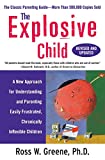
The Explosive Child by Ross Greene, Ph.D.
Some children are easier to parent than others. Some children have very challenging behaviors and require much more of our parenting skills. Some people call this “parenting plus” or “expert parenting.” Parents with a child like this often feel like they have tried everything (rewards, time-outs, loss of privileges) and nothing is working. This can be very frustrating and challenging. Dr. Ross Greene has extensive expertise in working with children who are difficult to parent. He found that many of these children face challenges with self-regulation and flexibility. Things like “switching gears” (including changes from one activity to another or from their point of view to someone else’s), tolerating frustration, controlling impulses, organizing and planning, are much harder for them than for most other children. These children often have “meltdowns” or temper tantrums that can become very violent and overwhelming. Somehow, standard rewards and consequences that work fine for most kids seem to ineffective in preventing these tantrums.
Dr. Greene created a Collaborative Problem Solving (CPS) approach to address the needs of these “explosive” children. A central tenet of his CPS approach is that children do well if they can. According to Dr. Greene, these children are not manipulative or coercive, they just don’t have the flexibility and skills needed to handle frustration that most other children have. Just as dyslexic children need extra help with reading, these children need extra help with flexibility and frustration tolerance. The Collaborative Problem Solving approach is designed to help parents learn how to avoid meltdowns with skills they can teach their children for being more flexible. The Explosive Child is well written, engaging, and very useful for helping you better understand your child and how to help him or her. Importantly, you can benefit from using Collaborative Problem Solving with your child, even if he or she is not “explosive.”

How to Talk So Kids Will Listen & Listen So Kids Will Talk by Adele Faber & Elaine Mazlish

SOS! Help for Parents by Lynn Clark, Ph.D.
We consider Dr. Clark’s SOS! Help for Parents a must-read for parents of young to pre-teen kids. Dr. Clark draws upon 20 years of practice as a psychologist, his own experiences as a parent and research on what works with kids, to provide helpful behavioral strategies for parents. Among the many useful topics, Dr. Clark makes a concerted effort to explain the proper use of a time-out. Time-out, when used correctly, is a powerful tool to help manage children’s behavior. As Dr. Clark points out, when parents claim that time-outs are ineffective, it is most likely that they are not implementing the technique properly. This has been our experience as well. We encourage you to read this book carefully and focus on certain strategies to try out. Attempting to implement too many new strategies at once can be overwhelming and confusing for both parents and children. If there are two parents, both you and your partner should implement strategies in a consistent manner for the greatest likelihood of obtaining positive results.
SOS! Help for Parents and How to Talk So Kids Will Listen and Listen So Kids Will Talk work well in conjunction together. SOS! Help for Parents focuses more on behavioral strategies and How to Talk… focuses more on communication strategies. Together, they cover the basics quite well.
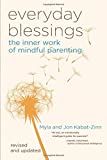
Everyday Blessings: The Inner Work of Mindful Parenting by Jon & Myla Kabat-Zinn
In this book, Dr. Jon Kabat-Zinn, one of the key figures in bringing mindfulness to the western world, and his wife Myla, tackle the task of parenting. No parent escapes the very trying realities of being a parent, and Jon and Myla Kabat-Zinn acknowledge this truth. But whereas so many books and experts focus on the difficulties of parenting, Everyday Blessings focuses on the joys as well …the “everyday blessings” of parenting.
Although there are some ways in which the Kabat-Zinns encourage the reader to relate to their children that could be considered mindfulness exercises, the strategies are quite universal. For instance, Everyday Blessing’s asks its readers to imagine the world through the eyes of a child while considering the importance of apologies. We recommend this book for any parent, not just those who have an interest in mindfulness.5. It’s Complicated: The Social Lives of Networked Teens by Danah Boyd
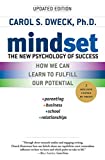
Mindset: The New Psychology of Success by Carol S. Dweck, Ph.D.
This is a wonderful book if you want to help your child or teen be more successful in school (or at sports, music, art, or any other skill), less afraid of failure, and more engaged in the learning process. According to Dr. Dweck, there are basically two ways to think about intelligence and talent. First, you might think about it with a “fixed mindset,” where you believe that you have what you are born with and that’s it. Or second, you might have a “growth mindset”, where you believe that intelligence or a specific talent is malleable and can change as a result of hard work. Neuroscientific research in the past two decades has found plenty of evidence for the growth mindset. This research purports that our brains change constantly as a result of our actions and our experiences. Dr. Dweck has found in her research that the way adults (parents and teachers) talk with children about intelligence and talent has profound effects on the mindset they develop. She demonstrated with her research that children who have a growth mindset are more successful at mastering new academic skills than children with a fixed mindset. Dr. Dweck found that children with growth mindsets more readily take on new challenging tasks, have more fun figuring out new strategies to solve problems, are less afraid of failure, learn more from failure, and end up performing better than children with a fixed mindset. This book contains many practical tips and strategies to help foster a growth mindset in you and your child or teen.
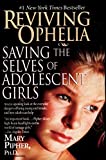
Reviving Ophelia, Saving the Selves of Adolescent Girls by Mary Pipher
Although this book was published more than fifteen years ago, it is still a very relevant topic today. The book tackles the questions why, despite all the advances of feminism, girls are still falling prey to depression, anxiety, and eating disorders. This book discusses the roles of sexism and “lookism” (the idea that girls and women tend to be valued primarily for the way they look) as expressed in the media and in society in general. This creates an environment that is detrimental to a girls self-conception. Mary Pipher discusses practical ways parents can challenge the assumptions of sexism and lookism. In doing so, parents can arm their daughters against these pressures by helping them recognize and critically evaluate them. This book is a must-read for parents with adolescent and preadolescent daughters.
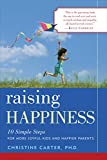
Raising Happiness, 10 Simple Steps for More Joyful Kids and Happier Parents by Christine Carter
One might think that it is an impossible task to raise happy children: Isn’t happiness something you are born with, like a character trait? Christine Carter proves that parents can do much to improve the happiness of their children as well as their own. She gives many practical suggestions and tips for developing positive emotions such as optimism, faith, and confidence. Her advice is pragmatic and based on scientific research. Moreover, parents are encouraged to do the best they can and to welcome mistakes because they can learn from them. They are also encouraged to take good care of themselves. This book can be an inspiration for parents with kids of all ages.
For Parents and Teenagers: Dissolving the Barrier Between You and Your Teen by William Glasser, M.D.
In this provocative and accessible book, Dr. Glasser introduces his Choice Theory within the first two chapters and then uses case studies to illustrate how it can be used to assist parents in their relationships with their teenagers who are experiencing various types of difficulties (e.g., depression, drug addiction, anger, anorexia, conflict with their parents). His case studies are fascinating, which make Dr. Glasser’s book an enjoyable, compelling read. Although you might not agree with everything Dr. Glasser proposes, he provides a philosophical approach as well as numerous practical suggestions that can help parents and teachers improve their relationships with teenagers. Moreover, the approaches within this book can be applied to improve any of our relationships such as those with coworkers, friends, and romantic partners. (Note: This book was formerly titled Unhappy Teenagers, an unfortunate title choice.)
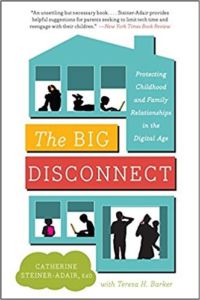
The Big Disconnect: Protecting Childhood and Family Relationships in a Digital Age By Catherine Steiner-Adair and Teresa H. Barker
Clinical psychologist Dr. Catherine Steiner-Adair explains how everyday life is undergoing a massive transformation in this digital age. Easy access to social media and the Internet has made it almost impossible to shield children from damaging adult material. Parent child relationships are falling apart and children are left feeling lonely. Written about real-life stories with her clinical and consulting work, Stiener-Adair provides parents a way to manage with confidence the tech revolution in their household.
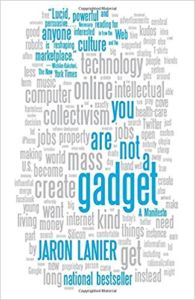
You Are Not a Gadget: A Manifesto by Jaron Lanier
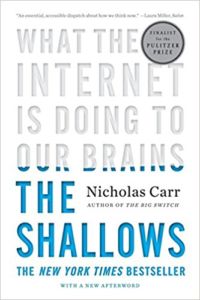
The Shallows: What the Internet Is Doing to Our Brains by Nicholas Carr
This novel discusses how the human thought has been shaped for centuries by tools such as maps, clocks and computers. Carr includes fascinating neuroscience research that has proven that the way we use technology- storing and sharing- can literally rewire our brain pathways. Instead of focusing and examining, the Internet has trained us to scan and skim. Consequently, it appears that we are losing our ability to reflect and concentrate.

Reality Is Broken: Why Games Make Us Better and How They Can Change the World by Jane McGonigal
McGonigal is a visionary game designer who’s mission is to produce games to boost world happiness. Instead of using games to escape, McGonigal wants to harness the power of games to fix what is wrong with our social world- medical issues such as depression and obesity, even tackling global issues like climate change. By introducing the world to cutting edge games that are already changing our world, her hope is that the future will be lead by those who understand and play games

It’s Complicated: The Social Lives of Networked Teens by Danah Boyd
Youth culture and technology expert Danah Boyd discusses the truth behind teens and their social media use. She explores topics from identity to privacy, as well as dangers such as cyberbullying. This book argues that our society has failed our youth by not preparing them to be engaged citizens through their internet use. Boyd finds that teens often manage to form an identity through online engagement. With more than a decade of original fieldwork, the book concludes that kids are actually on the right track but acknowledging life in a technological era is complicated.
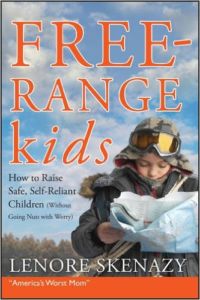
Free Range Kids: How to Raise Safe, Self-Reliant Children (Without Going Nuts with Worry) by Lenore Skenazy
After the uproar from parent groups, bloggers, and the media about Lenore Skenazy allowing her 9 year old to ride the subway alone in NYC, her book became a national movement. In today’s age, Skenazy says, parents see any risk as a fartoo large of a risk. Parents must realize that the biggest danger for a child is growing up without choice or independence.
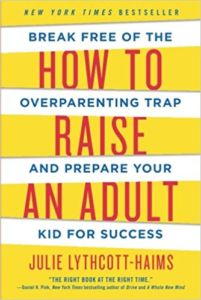
How to Raise an Adult: Break Free of the Overparenting Trap and Prepare Your Kids for Success by Julie Lythcott-Haims
Julie Lythcott, as a mother and student dean herself, shows how overparenting can harm children, their parents and society as a whole. Engaging in conversations with admission advisors and educators, Lythcott offers an alternative strategy that allows kids to make mistakes and to develop their own determination for success. This book is a call to produce generations that can take control of their own lives with complete confidence.
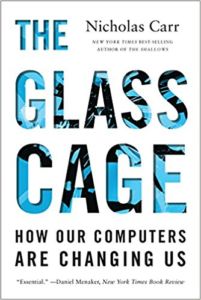
The Glass Cage: How Our Computers Are Changing Us by Nicholas Carr
Nicholas Carr explores the hidden costs of technology domination over our work and lives. Carr dives into psychological and neurological studies that demonstrate how people’s happiness and satisfaction are tied to performing in the real world. The book reveals how shifting our world to computer screens produces a generation that is disconnected. Carr cites some of the latest research to show how technology can be used not to expand, rather than diminish, human experience.
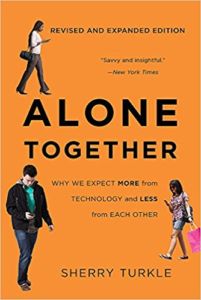
Alone Together: Why We Expect More from Technology and Less from Each Other by Sherry Turkle
Turkle, a psychologist and professor at M.I.T. uses her fascinating qualitiative research findings to explorehow we interact with social robots, social media, and other forms of technology. She explores how the concept of the self is being altered by technology, sometimes in alarming ways. She suggests that the development of healthy, need-satisfying relationships are being compromised in the digital age.
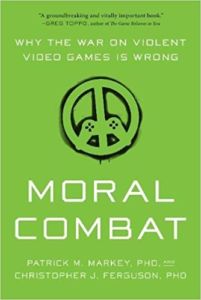
Moral Combat: Why the War on Violent Video Games Is Wrong by Patrick Markey and Christopher Ferguson
Today millions of children are living in virtual words though violent video games such as Call of Duty, Halo, and Grand Theft Auto. These violent games have been targeted as the influence for society’s great evils. But In Moral Combat, psychologist Markey and Ferguson investigate how video games can have a positive impact on social skills, stress, and even moral sensitivity.
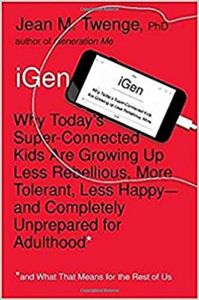
Renowned psychologist and author of Generation Me, explains how young adults born in the mid-1990s (iGen) are seperate from the Millennial, as they have spent their entire life in the age of technology. Could this explain why iGen is experiencing rising levels of anxiety, depression, and loneliness? With iGen being the leaders of the future, it is vital to understand this generation, unlike any other.
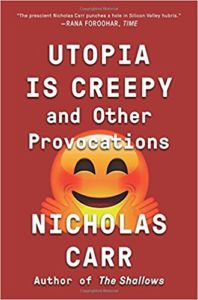
Utopia Is Creepy: And Other Provocations by Nicholas Carr
Nicholas Carr compels us to question if our technological future is truly a positive thing after all. Utopia Is Creepy questions how technology affects our relationships, political discourse, and more though science and sociological findings. This book consists of thoughtful and provocative essays that Mr. Carr has written for many publications over several years.
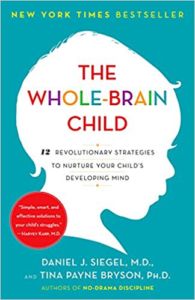
The Whole-Brain Child: 12 Revolutionary Strategies to Nurture Your Child’s Developing Mind by Daniel Siegel and Tina Bryson
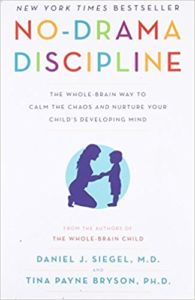
No-Drama Discipline: The Whole-Brain Way to Calm the Chaos and Nurture Your Child’s Developing Mind by Daniel Siegel and Tina Bryson
Neuropsychiatrist, Daniel Siegel, and parenting expert, Tina Bryson explain how to reach your child though instruction and not reprimanding. With their advice, you will help your child redirect emotions and help overcome meltdowns. Learn to master the best methods to navigate behavioral learning experiences with your children.
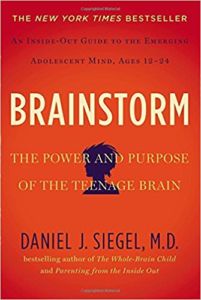
Brainstorm: The Power and Purpose of the Teenage Brain by Daniel Siegel
Siegel challenges popular misconceptions about teenager’s active and evolving brains. Brainstorm offers tools to help guide your teenager to healthy, happy, and involved relationships. Finally understand the depth and spirit of today’s teenagers though Siegel’s professional insight.

